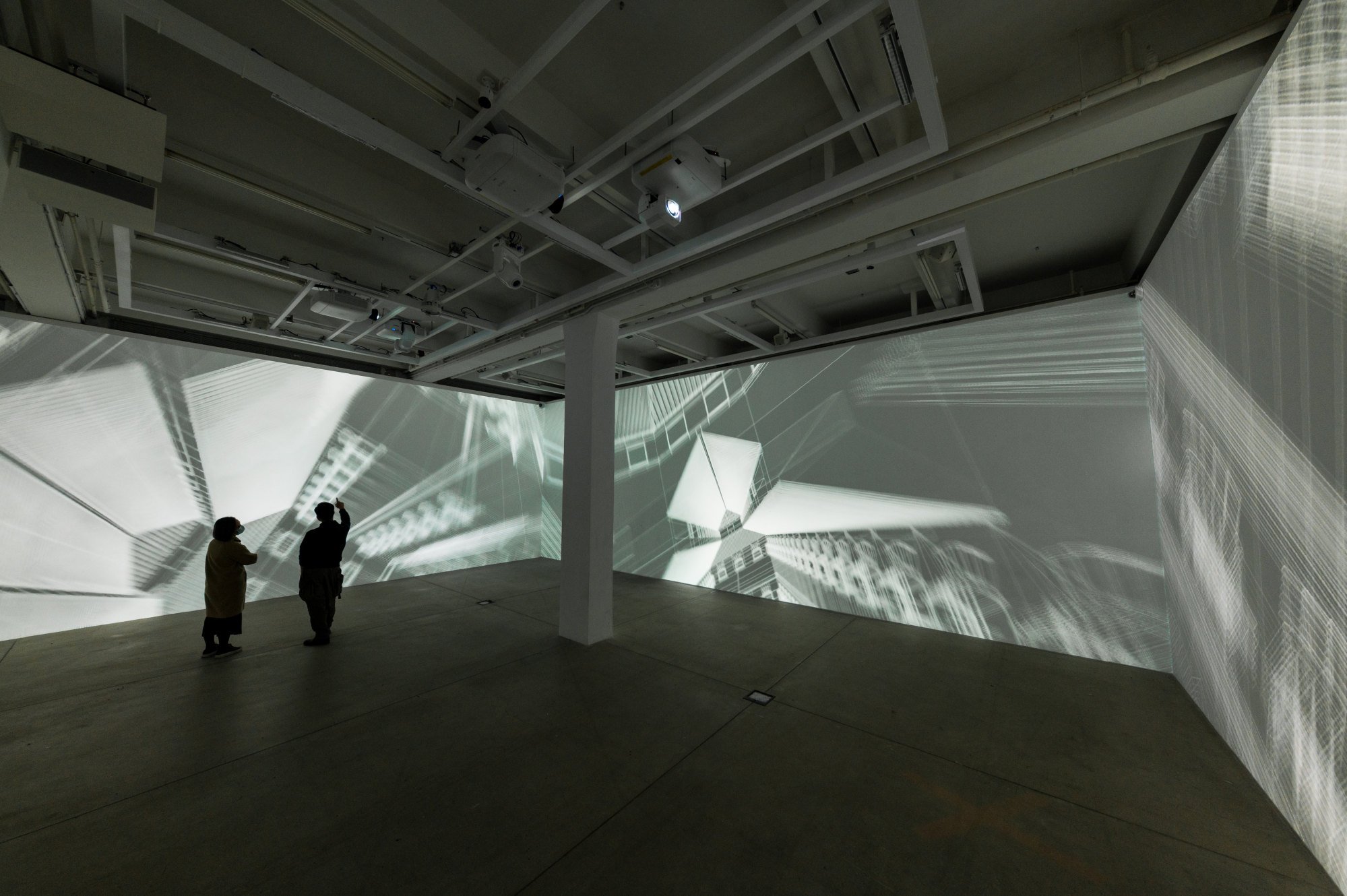
What was Hong Kong’s first prison like? New Tai Kwun digital show gives a glimpse into life at Victoria Gaol
- The Tai Kwun heritage and arts centre compound was once the home of Victoria Gaol, Hong Kong’s first prison
- A new digital programme at the centre provides insight into what life there was like using augmented reality, animations, lighting and sound
As Hong Kong’s Tai Kwun heritage and arts centre becomes increasingly known for hosting contemporary art and live shows – and for its many eating establishments – it can be easy for visitors to gloss over the compound’s complex and storied history as the home of Victoria Gaol: Hong Kong’s first prison.
But a new digital programme called “DigiRadiance” hopes to re-emphasise Tai Kwun’s heritage by providing an artistic glimpse into memories from the mid-19th-century prison.
Curated by Tai Kwun curators Ying Kwok and Jims Lam, the two-part programme consists of a 30-minute immersive show in the F Hall space, and five augmented reality (AR) checkpoints dotted around the Prison Yard and D Hall that allow visitors to engage with Tai Kwun’s architectural features and various details related to prison life.
“Digital media does offer that kind of opportunity for us: to realise something, to catch something which we just can’t see any more,” Kwok says.
“We hope to give hints for people to understand architectural design, to understand the spatial configuration that will [prompt them] to read a little bit more – why the building was built in this way, why the cell was designed in this way, and with the size like that.”

The immersive show, which was created by commissioned artists Vvzela Kook and Ng Tsz-kwan, is rooted in Victoria Gaol’s original spatial configuration as a radial prison.
Once upon a time, the prison consisted of a central guard house in the middle and five stretched wings. Those stationed in the guard house could communicate to guards stationed at the end of each wing at any time, Kwok explains.
The geometric prison design was the first of its kind in Asia, and a direct replication of what is now HM Prison Pentonville in London.

“People were considering how they can best surveil or control the prison environment,” Kwok says. “[A] prison is a very highly secure and surveilled institution compared to hospitals, schools. We all have surveillance in every [type of] institution, but prisons are in the extreme, and that extremeness is a kind of punishment.”
As a result, Kook and Ng’s show delves deep into the complexities behind the punishment of imprisonment, taking visitors on a journey that touches on confinement, labour, discipline and reform.
“How would you feel if every single part of your life was guided?” Kwok asks.

She hopes that visitors will be able to consider prison life in the context of their own lives and behaviours in modern society.
“What happens when people stop repeating the instructions? Or what happened when the routine was disrupted?”
Visitors entering F Hall are first greeted in the waiting area with questions and text from the curators, prompting instant introspection.
Once guests enter the main space, circling spotlights resemble the flashlights that prison guards often use, especially when looking for someone who has escaped their cell.
‘It started as a joke’: Hong Kong artist’s Queer Eye-based art scene parody
Then the show begins, with a series of animations designed by Kook giving further insight into prison life.
Ng, one of Hong Kong’s media-art pioneers, was responsible for designing the visitor experience, including the show arrangement, visitor walking route, lighting and sound.
In one particular interactive sequence, red crosses are displayed on the floor to invite guests to interact with the scenes. Step near the kitchen and the chefs will turn around at your interruption; stand near the prison wall and the jail fencing will appear; step close to line of female prisoners and the first will be prompted to collect her medicine for the day.

Meanwhile, the five AR checkpoints can be found by markers across the Prison Yard and D Hall. Scan the QR code on your phone to see where the original prison buildings were positioned, learn more about how punishment evolved from public cruelty to individual confinement, and feel the spatial limitations of a prison cell.
Aside from the last checkpoint, which presents a photo opportunity at the Sally Port & Red Circle medication collection area, the rest are informative, or designed in a way to provoke visitors to think beyond the surface.
“Sometimes I feel like media arts can easily fall into the trap of entertaining or engaging for the sake of engaging, but I think we engage for reason,” Kwok says.
“We hope that the whole programme will help people better understand the different spatial configurations [and] material design, and eventually will help them to better appreciate the historical site.”

“DigiRadiance”, Tai Kwun, 10 Hollywood Road, Central, 11am-7pm with shows beginning on the hour and half past every hour. Until March 16.

